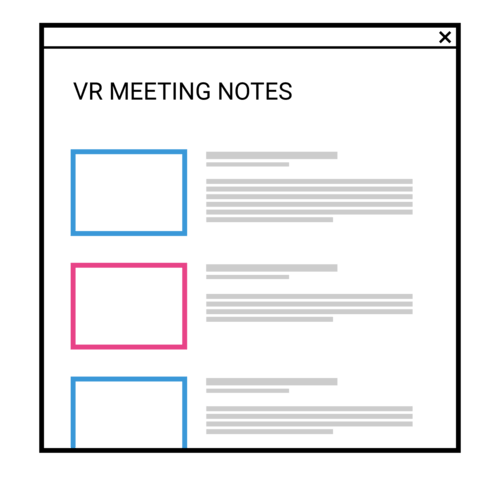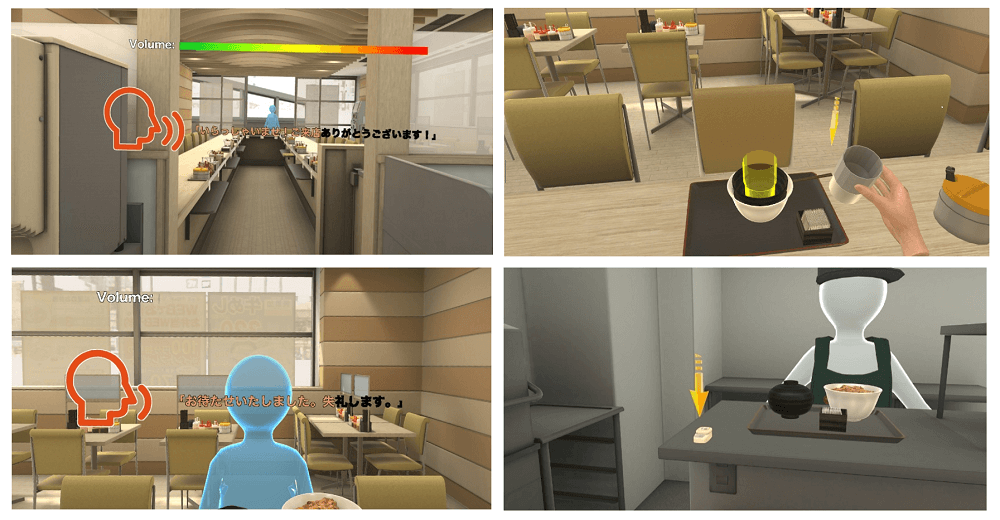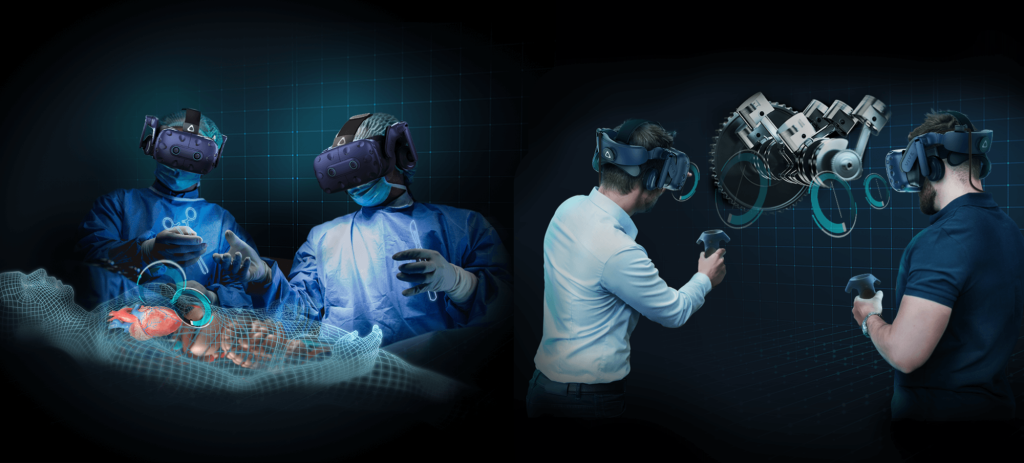#012
2020 AR/VR Industry Development Trends | Part 2: Virtual Reality
A clearer understand on VR trends and current applications

Compared with augmented reality (AR), virtual reality (VR) sees less commercial applications, mainly because VR comes with a head-mounted display that obscures the full line of sight, so users can only experience it in a safe environment.
However, as technology matures, so does VR equipment. Not only does it reflect in a better image quality, but also in terms of the hardware. There are certain industries which VR have thrived in, this article talks about the development of VR in recent years.
2020 VR Industry Trends | (I) Consumer-centric Entertainment
Integrating VR in physical locations – creating a different experience
More and more exhibition spaces, VR shops, restaurants, and other establishments, are providing VR experiences to attract the attention of visitors. You can even find VR experiences going at NTD100 (~SGD5) per pop, as the experience is becoming more commonplace. Long gone are the days of paying hundreds of dollars for less than half an hours’ worth of VR experience.
Looking at theme parks, it is very costly and time consuming to constantly change the rides offered, and it requires a certain amount of floor space. To combat this issue of fatigue among frequent visitors, theme parks have began introducing VR games, offering visitors a variety of new attractions without burning a hole in their pockets. Taking E-DA theme park as an example, they introduced their themed VR Station, where visitors, as long as they have a valid entry ticket, can play a large variety of VR games in the theme park. The game equipment can constantly be refreshed and upgraded, as technology advances. Thus, we can expect to see newer and more exciting VR experience, especially in the theme park industry.
VR in the gaming industry
In 2019, Nintendo Labo launched their Nintendo Labo Toy Con 04 VR Kit, made out of DIY cardboard. The Labo series combines the three key playing points of: DIY, game design, and VR, successfully catching the attention of gamers of all ages. Sony has also been making headlines with their announcement of the PS5, which is set to be released towards the end of 2020. Sony has announced that they are working on the supporting PSVR series, but it has been rumoured that the PSVR2 may not be launched until 2021. Despite all this, it is clear that Sony is continuing to blaze a trail in commandeering the market for console VR games.
On PC, Valve released their long-awaited sequel to the Half-Life series, releasing Half-Life: Alyx in March. With the success of previous games in this series, many gamers had been eagerly awaiting the release of their latest addition.
Half-Life: Alyx is highly compatible, and can be adapted to play on all head-mounted displays that support SteamVR. There are however, certain hardware limitations, as it is a complex game. The minimum specifications for the processor Core is i5-7500 / Ryzen 5 1600, with at least 12GB memory, GTX 1060 / RX 580 graphics card, and 6GB VRAM.
Be it for console or for PC, VR games are expected to stay. It has become a game design choice, just like kinetic games such as Wii or Kinect that came before it.
2020 VR Industry Trends | (II) Enterprise Use – Collaboration, Conferencing, Education, and Training
VR in online conferencing and collaboration platforms
Under the influence of the recent COVID-19 situation, many businesses have been forced to rethink their method of operations. Business meetings and collaborations have been brought up on and on again for discussion, to find a replacement for face-to-face meeting. Be it AR or VR, these emerging technologies have offered many solutions in this area before, and will continue doing so, especially during these times.
BigScreen VR is a multiple-interaction platform that aims to improve how people work, entertain, chat, and collaborate. Its main focus is on socializing, movie-watching, and gaming, however it is great for business meetings too. One of its key features is that users can mirror their concent onto the big centre screen in the simulation, making it feel as if we are in a real conference room. BigScreen also supports most headsets, including: Oculus Quest, Oculus Rift S, Oculus Go, Valve Index, SteamVR, VIVE, Windows Mixed Reality, and so on, with PSVR to join its ranks.
InsiteVR is compatible with Autodesk software such as BIM 360, Navisworks, Revit and Sketchup. It is a well-positioned VR multi-person collaboration platform, mainly used in the AEC (Architecture, Engineering, Construction) industry. InsiteVR simplifies communication during meetings between different parties, allowing either party to directly indicate the content or questions discussed, in real-time, easily noting it down with either voice or text while wearing the VR headset. After the meeting, an automated PDF meeting with notes and screenshots is automatically generated, so users can review the content and issues discussed with ease. InsiteVR is currently supported on devices including the HTC Vive series, Oculus Rift series, Oculus Quest, Oculus Go, and Windows MR.

(InsiteVR automatically generates PDF reports from screenshots and annotations in VR meetings. Image Source: InsiteVR.)
In addition to the above two examples, there are many platforms that are great for VR collaborations. However, when VR collaboration is faced with issues such as the need for a fixed, spacious areas, as well as VR hardware equipment, it may be difficult to commercialise in the general consumer market. Unless VR taps onto existing services that are well positioned, VR collaboration companies may find it challenging to compete with popular online conference platforms such as Skype or Zoom. Adding on to the fact that VR devices cannot be used while on-the-go, the convenience and versatility of AR online collaboration platforms are much better than its VR counterparts. Therefore, VR online meetings may only be more applicable in certain industries.
VR for education and training
Over the past few years, we see an uptick in companies, big and small, from different industries, such as Verizon, Matsuya Foods, and the US Air Force, using VR to assist in their internal training. VR training is advantageous in the sense that it ensures a consistent output of training quality, without the heavy cost. It can simulate real-world training, where employees can familiarize themselves with the company standard operating procedures, as well as having the option to create different emergency situations, allowing employees to understand how to respond to these situations and practice handling these issues, so that they are more likely to be able to overcome these issues when faced in the real-world.

(VR for Matsuya Foods internal training. Image Source: Matsuya Foods)
The CEO of HTC, Yves Maitre, once said that 2020 is a good year for the VR industry. Especially so with the push of the COVID-19 situation. Maitre estimated that the overall VR market will grow by 50% in 2020, with the main source of revenue coming from B2B industry applications. To counter this growing demand, HTC also launched their Vive Pro Eye series, providing a variety of solutions to meet the needs of different corporate users. Current industry applications of the Vive Pro Eye for VR training include industries such as manufacturing, medicine, transport, design, real estate, and so on.
Although AR and VR are similar in terms that they can both be beneficial in providing education and training services, both have their own advantage and disadvantages in each sector. For industries that require a fully immersive training environment, such as inflight pilot training, VR would be a better choice over AR; for training that requires a second-layer of information and training material, overlaid on top of the real-world objects, AR is the preferred training method.
2020 VR Industry Trends | (III) VR hardware and software maturity

(Image Source: HTC)
The development of modern VR head-mounted displays has made much progress over the years. In addition to a better display quality, more and more VR headsets are moving from wired towards wireless. The introduction of convenient all-in-one headsets such as the Oculus Quest, as well as a more attractive price point helps greatly with the acceptance and integration of VR technology in all sectors. The consumers today have a plethora of choices in terms of quality and affordability of VR headsets in the market. There definitely is still room for improvement in terms of comfortability, headset weight, and reducing fatigue when wearing. However, the majority of headsets in the market are already improved versions of their predecessors, and developers are putting in time and effort in a continuous bid to improve the quality of these hardware.
Despite the constant development in hardware, VR still has some ways to go in terms of innovative application methods, to create a more streamlined experience. Combining precision eye tracking with professional-grade sound and graphics, the HTC VIVE Pro Eye headset analyses the eye movement, attention, and focus, analysing the data to better understand the users’ interactive behaviours. This in turn, allows for a better understanding and analysis of the effectiveness of training. Presently, most VR devices are still equipped with controllers for movement and interaction within the virtual world. As more advanced hardware is being developed, we are expecting VR devices to become integrated with gloves, or to have more advanced gesture tracking functions, and other such functions, allowing for a diversified method of interaction to cater to different usage scenarios in the consumer market.
As we previously mentioned, there are many more offline venues such as theme parks and exhibition galleries, that are providing customers with additional VR experience. Not everyone may have experienced VR before, but the majority of people have a general understanding of it, and thus have their own expectations.
Through integrating the characteristics and advantages of VR technology, with the changing mentality of consumers, there are more avenues that VR can reach in the coming future, making big waves in the training simulation, as well as entertainment sector.
